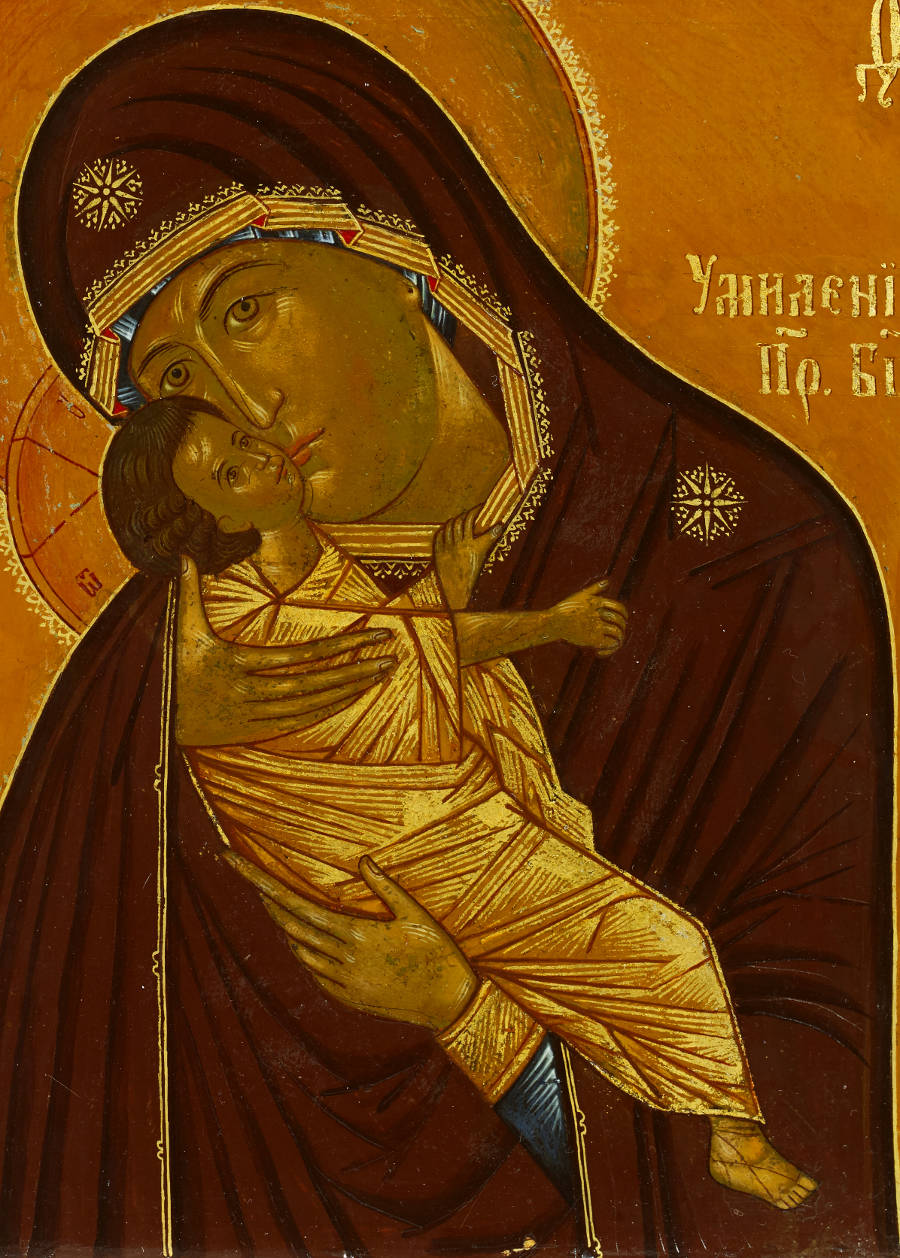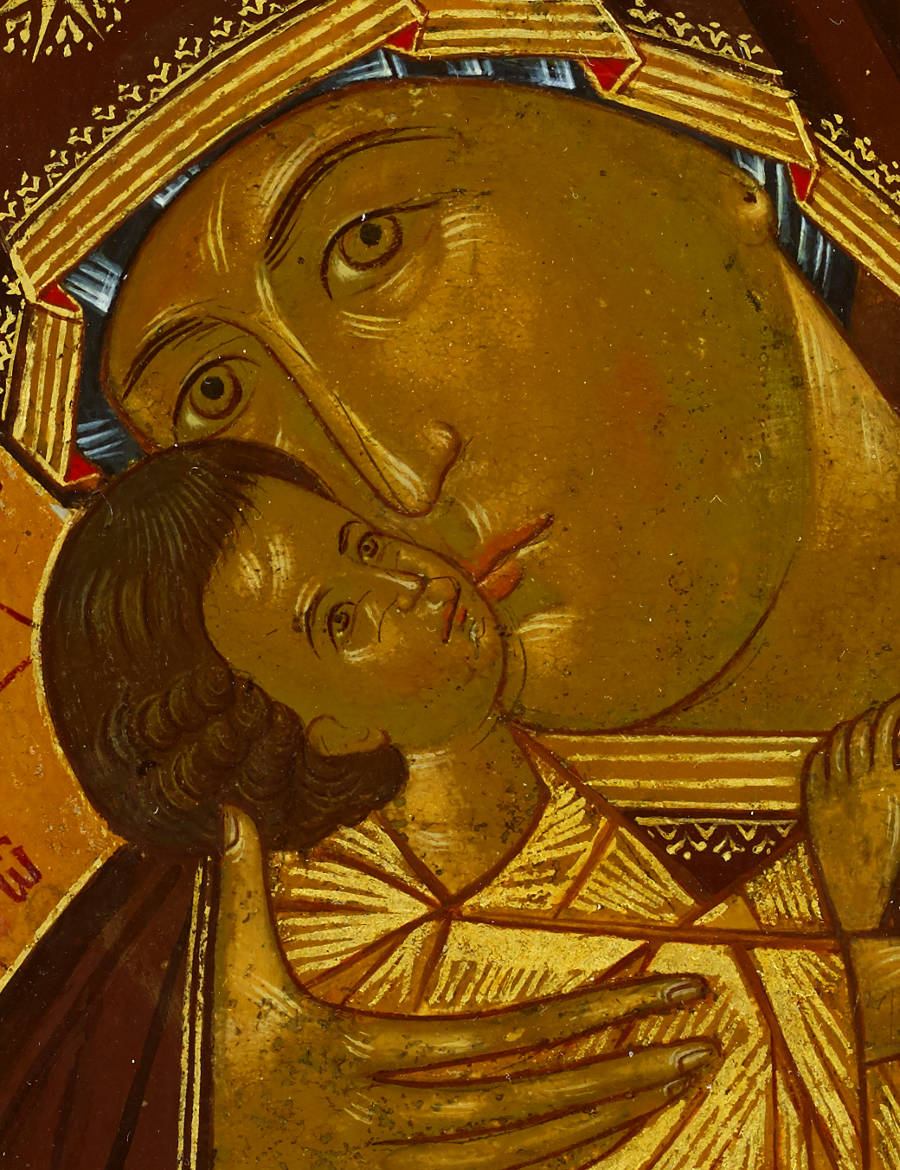 Exhibitions Archive
Exhibitions Archive
 Exhibitions Archive
Exhibitions Archive

AZ16. Virgin Umilenie,
Russian, 19th century
Panel: 31.1 x 27 cm; 2.5cm thickness![hideselects= [On] header =[Convert size] body = [Click here to show the size in inches] Click here to convert metric size to imperial](images/inches.gif)
Inscriptions: IC XC, the Greek letters Iesus Christo. ΜΡ ΘΟ, Meter Theou ‘Mother of God’. Umilenie, Old Slavonic for ‘Loving–Kindness’.


No. 16, Detail

No. 16, Detail
This icon is rare and highly unusual in that it derives from a well-known 15th century Cretan type never normally seen in Russia.
The image of ‘Tenderness’ or ‘Loving-Kindness’ (Gr. Eleousa, Rus. Umilenie, illustrates the intimacy between Mother and Son, seen as the expression of God’s love for humanity through the Incarnation, is of great antiquity. According to pious tradition the original was painted by Saint Luke.
The Glykophilousa (‘sweet-kissing’) is a variant of the ‘Tenderness’ theme developed by the Cretan School in the fifteenth century. Important examples are in the Museum of Russian Icons in Moscow and the Benaki Museum Athens (see Figs. 1 and 2).
Fig. 1. Angelos Akotantos (attributed) c. 1450, Museum of Russian Icons, Moscow.
Fig. 2. Emmanuel Lombardos, 1609. Virgin Glykophilousa, Benaki Museum Athens
The island of Crete, formerly part of Byzantium, had in the thirteenth century become part of the Venetian Empire. The interaction between Cretan painters and their counterparts in Venice produced the famous Cretan School, the major influence in the development of icon painting in the Greek world after the Fall of Constantinople in 1453 with the exception of Russia that accepted no Western influences until the 17th century when the Italo-Dutch Baroque influence begins to be seen. Thus No. 16 has no counterparts in Russian icons and may be among the first examples of an icon type from the Cretan School to appear in Russia.
Fig. 3. Back of panel